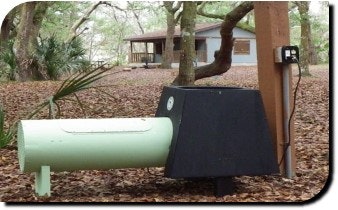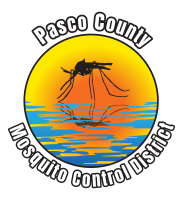Survelliance Tools
PCMCD entomologists perform routine surveillance of mosquito species throughout Pasco County using traps to assess mosquito presence, abundance, and behavior. Mosquitoes collected are identified to species in the laboratory, providing crucial data for targeting larvicide applications and guiding ULV adulticiding missions. To ensure the effectiveness of control materials, PCMCD monitors mosquito populations for resistance through bioassays. This involves collecting mosquito eggs and larvae from the environment, rearing them to maturity, and treating them with known insecticide concentrations. Field-caught mosquitoes are compared to lab-reared populations to determine susceptibility and identify any developing resistance, helping to adjust dosages and maintain effective control.

As one of many different surveillance tools used to determine the number of mosquitoes in a given area, PCMCD staff use passive suction traps that are designed and built in-house and have been in use for over 30 years. These traps have been replicated by other agencies such as the USDA and other mosquito control programs for use in their surveillance and research programs. Monitoring trends in trap collections throughout Pasco County over time provides an indication of the changes in the mosquito populations. They are very inexpensive to build and maintain.

